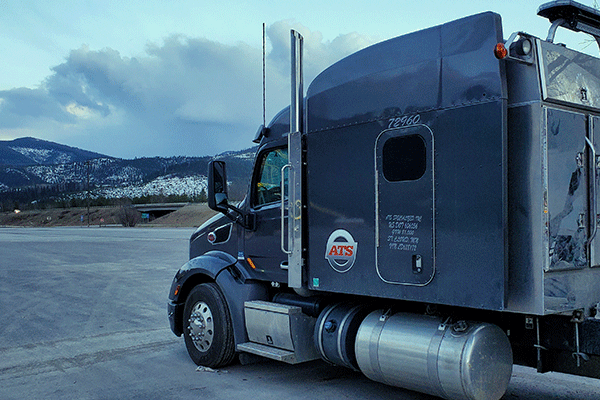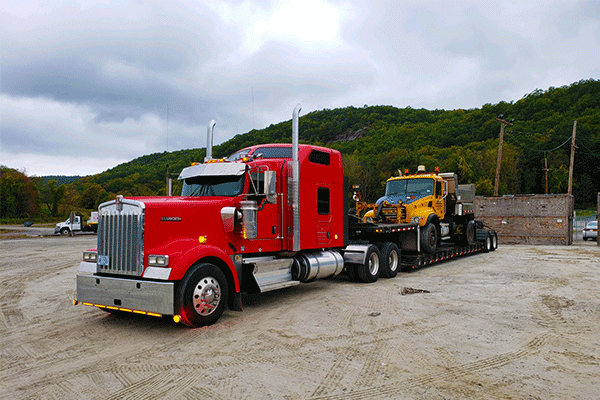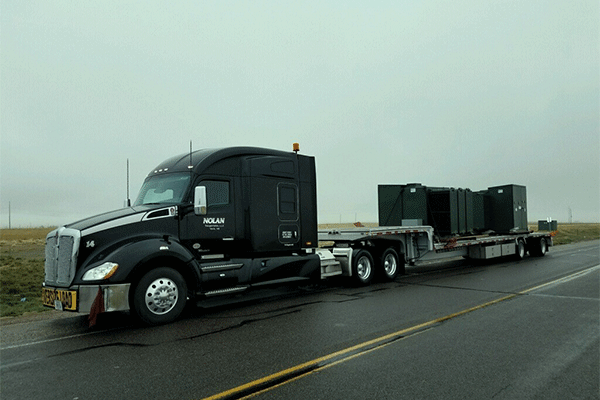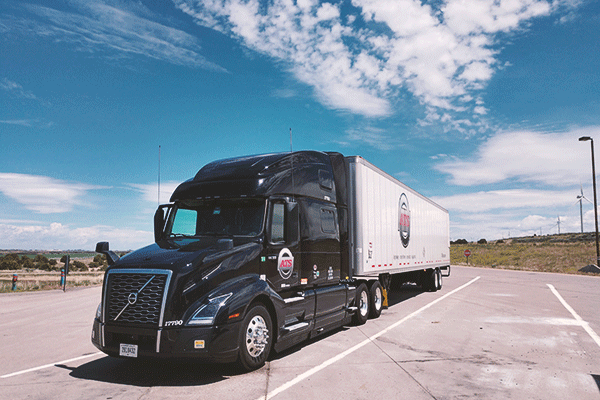Your load failed again. Not because of an unforeseen circumstance —like a truck breakdown — or an oversight on your part. No, your freight may be sitting in your loading dock, but it’s not because of anything you did. The due diligence you displayed in finding this newest provider was evident.
And, after careful consideration, you really thought they’d be an excellent fit for your needs. When the time came to tender your freight, you did so with full confidence and in anticipation of a soon-to-be job well done. But. . . your load failed again.
Frustratingly, your initial choice didn’t accept your freight, leaving you hanging and clambering for a last-second solution.
Here at Anderson Trucking Service (ATS), we know how difficult it can be for shippers, like you, to find reliable transportation partners. Sometimes the providers you choose aren't able to move your freight, even when offered the opportunity.
This can make managing a transportation supply chain difficult as tender rejection is discouraging each time.
In this article, let’s take a closer look at what causes your tendered freight to fall through and what steps you can take to increase your tender acceptance rate going forward.

What Causes Tender Rejection?
Today’s trucking landscape is complex. With over 6 million businesses — many of whom move goods — in the United States alone, providing the transportation capacity to meet their demands is a tall task.
That said, over 70% of this nation’s freight is moved using a trucking solution. This workload — coupled with the fact that we’re currently experiencing an unprecedented truck driver shortage — can severely limit the options shippers have to move their goods.
Although the supply of available truckers has diminished in recent history, the demand for their services has done the opposite.
The pinch, brought on by this tight market, places the full weight of this industry’s bargaining power into the hands of its most important piece — the truck driver.
As a result, shippers across our nation are experiencing lower tender acceptance rates than they have in the past as truckers recognize the heightened demand for their offerings. This recognition motivates drivers to make the most of their predicament as they only accept the best-fit loads for their needs.
For the most part, trucking companies “reject” a tendered load for one, or more, of the following reasons:
- The shipment doesn’t fit their schedule (not enough lead time).
- The shipment isn’t a great “network fit”.
- Rigid pick-up and delivery times make a shipment hard to manage.
- The specifics of the shipment weren’t correctly outlined at the time of award.
- The freight rate (price) doesn’t justify taking the load.
In the end, the likelihood that your freight gets hauled usually comes down to money (whether directly or indirectly) — as you compete with other shippers for the same trailer space. This can make getting consistent tender acceptance hard on your budget as the price of doing business continues to rise.
That said, there are plenty of things you can do — beyond simply “paying more” — to mitigate tender-acceptance challenges in the future. Let’s talk about some of them.
How Can You Promote Tender Acceptance?
Ensuring that your shipment gets picked up after your tender it to your provider is made easier by:
- Adding flexibility to your shipping windows.
- Providing proper lead time to find a solution.
- Incorporating driver-friendly practices into your operations.
- Communicating accurate shipping details from the onset.
- Maintaining a reliable network of carriers.
Though some of these tactics may not apply to your supply chain, or be possible for you to accommodate, doing any one of them will improve your tender acceptance.

Tactic #1: Add Flexibility To Your Shipping Windows
Trucking companies — and truckers in general — like to get the most out of their physical assets. The only way they make money is by hitting the open road with freight behind them so they’re motivated to do so.
That said, a truck driver’s ability to do their job and make money is subject to the Federal Motor Carrier Safety Administration’s (FMCSA) hours of service (HOS) guidelines. Within their depths, these HOS regulations dictate how long a trucker can be “on-duty” in one day.
As it currently sits, a truck driver’s on-duty clock begins as soon as he starts his truck — to begin the day — and expires exactly 14 hours later. 11 of these hours can be spent driving, while the remaining minutes are dedicated for breaks.
In the hopes of making the most of their allotted hours, truckers look for freight that neatly fits their schedules — which they like to plan days in advance.
Tight shipping windows like a rigid early morning pick-up or an early afternoon drop, can be highly disruptive to a trucker’s plans. As such, shippers with these tight timeframes frequently see their tenders fail as a trucking company simply can’t make them work.
To avoid these issues, consider adding some flexibility to your shipping windows.
This could mean:
- Instead of planting firmly on an 8 a.m. pick-up appointment, try a timeframe of 8 a.m. to 11 a.m. instead. (The bigger the window, the better likelihood your preferred carrier can match an available truck to your shipment).
- Instead of requesting a driver pick up your load on a Friday at 4 p.m. and sit on it until Monday at noon, adjust your schedule to allow for a same-day pick and drop.
- Consider asking your carrier what drop-off time would work best for them and see if your schedule could match.
Matching your trucker’s schedule to your own will increase your tender acceptance rate substantially. This process is made far easier with a little bit of flexibility in your shipping windows.
Tactic #2: Give Your Provider Proper Lead Time
Too often tenders are rejected because the trucking company simply didn’t get enough advanced warning to move freight at their quoted rate. Time is money in the transportation industry and giving your provider adequate lead time to find your solution will help them save you money.
Expect your tender to fail if you let your partner know about a shipment two hours before it loads. Managing these requests is very difficult in such a fast-paced industry.
Sure, you can find a last-second truck to move your freight but you’ll need to pay substantially more than you otherwise would. When advanced warning isn’t given and a shipper can’t pay the heightened freight rate, tenders fail.
A lead time of 24 to 72 hours, before when your shipment needs to load, is crucial for tender acceptance. Given this amount of warning, your trucking company will be able to put your load on their calendar, find a trucker in your area and price your freight accordingly.

Tactic #3: Incorporate Driver-Friendly Practices Into Your Operations
Truckers make the trucking industry go-round. Imagine that. As such, the more you can do to make their interactions with your business enjoyable — and easy — the better your tender acceptance will be.
This is especially the case when other aspects of your load — like rigid appointment times — make it more difficult to service.
Offering things like overnight parking when you need an early morning pick-up will allow your tucker to make the most of their time and reset their clock before picking up your freight.
Other driver-friendly practices include, but aren’t limited to:
- Dependably quick and easy loading times.
- Lunchrooms, bathrooms and showers.
- Clear directions for the driver to follow (where to go, where to park, which side of the building to enter on, etc.)
- Treating drivers with respect, kindness and intrigue.
As relationships form and trucking companies realize the emphasis you’re putting on driver experience, your tender acceptance rates — especially with repeat carriers — will increase.
Additionally, make sure to stress any and all driver-focused amenities your company offers at the time of award. Clearly communicating where your strengths lie, in this regard, will make your freight all the more desirable.
Tactic #4: Communicate Accurate Shipment Details

A slip of the tongue, a momentary lapse or a single neglected detail can sometimes mean the difference between a successful shipment and a tender rejection.
Transparently communicating the specifics of your freight like the type of commodity, the overall weight and dimensions (length, width & height) and whether a special endorsement is necessary (tanker, hazmat, etc.) can make or break your shipment.
Tender rejection can result from an initial miscommunication on the actual nature of your load. Maybe your shipment requires a type of trailer that your provider doesn’t have or an endorsement that isn’t held by their drivers. Perhaps your carrier didn’t realize how much weight you were hoping to get onto their flatbed trailer.
Or, it could be that transit details (LOH, pick-up & delivery timeframes, etc.) weren't specific enough at the beginning and your carrier quoted your freight incorrectly.
No matter what it is, too many tenders are rejected due to a failure to communicate on all sides.
Avoiding issues like this must happen at the onset of your relationship with a transportation company. Be sure to communicate the specifics of your freight from all angles and ask plenty of questions about their ability to handle your request.
Many times the carriers that deny your tender are happy to explain why they did so. Asking them for their input is another great way to adjust your tactics and avoid mishaps in the future.
Tactic #5 Maintain Your Carrier Network
Transportation is a business of relationships. And companies that consistently move freight with the same few carriers find that tender acceptance is rarely an issue.
You see, companies that succeed together — and understand one another — like to continue these partnerships. And as intimacy develops from one business to the next, so does trust.
As such, growing and maintaining a consistent network of transportation providers — composed of both brokers and asset companies — will go a long way toward strengthening your tender acceptance.
Time and again, these providers will pick up your freight and strengthen this bond further.
And, when the time comes to tender your next load, you’ll know — based on experience — that your provider has the competencies and understandings needed to move it.
Often, we recommend that companies, where tender acceptance is an issue, track their rate over time. Companies that do so are able to lean on their pre-existing carrier relationships to get feedback on why tender acceptance is fluctuating.
Conversations like these are a great way to hold carriers accountable and make the adjustments needed to promote future tender acceptance.
Many times, businesses that hold these discussions with their core carriers walk away with stronger partnerships and higher acceptance rates than those that don’t.
Tender Your Freight to The Best Company
Perhaps the largest reason for a drop-off in tender acceptance is often overlooked: You may have simply selected the wrong partner.
Some trucking companies are less reliable than others and give the rest of us a bad name. That said, selecting a good company can be made difficult by the sheer amount of options to choose from.
Here at ATS, we take pride in helping shippers, like you, find the best-fit providers for their needs and increase their tender acceptance rates. To do this, we’ve compiled an index of resources in our Learning Hub to aid shippers in this process. Having all of the information you need is the first step in finding, vetting and selecting the best provider for your business.
Good transportation companies are out there, use these resources to find them.



